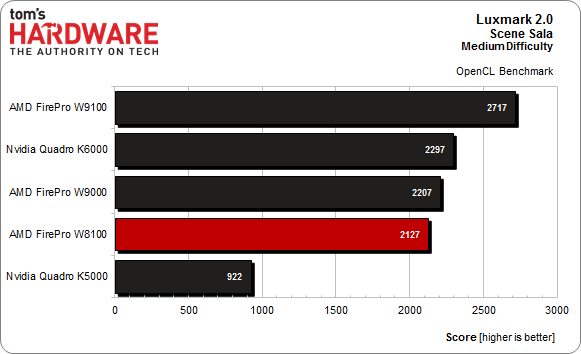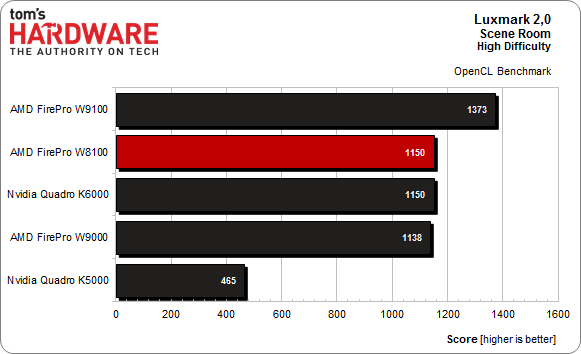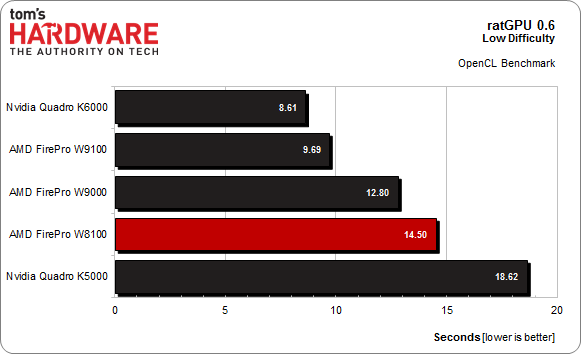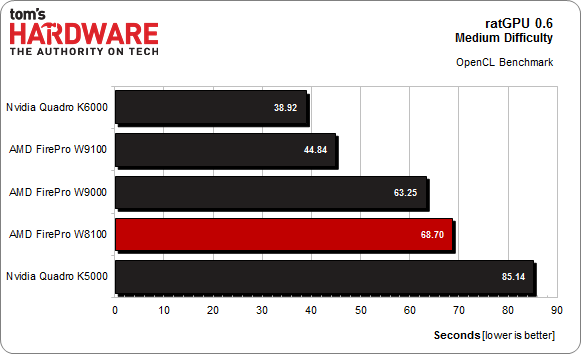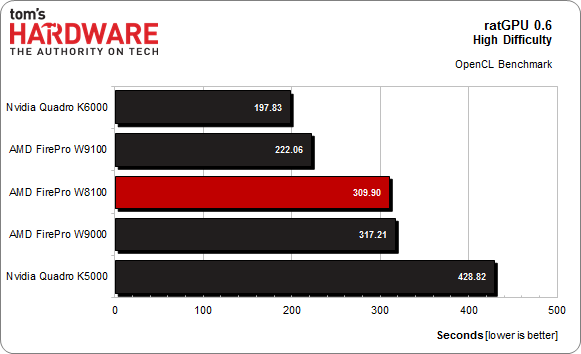AMD FirePro W8100 Review: The Professional Radeon R9 290
After introducing the flagship FirePro W9100, AMD now has a FirePro W8100 in its portfolio. Somewhat lower specs (like 8 GB of memory, a slower GPU, and fewer shader units) should position it in the workstation world where the Radeon R9 290 is in gaming.
OpenCL: Rendering Performance
LuxMark vs. RatGPU
Meet two different rendering engines that take different approaches. First, there's the popular LuxRender, on which LuxMark is based. This one finally attracted Nvidia's attention after showing up time and again as a weak spot for the company's GeForce and Quadro cards. RatGPU, on the other hand, didn't need that special attention; Nvidia's offerings did well in it right out of the gate.
LuxRender demonstrates that Nvidia's cards do support OpenCL fairly well, if there's no CUDA option. AMD once enjoyed a significant performance advantage in this test, though the magnitude of its wins is shrinking. The following charts represent LuxMark at three difficulty settings:
The FirePro cards land in order of their shader performance for simple single-precision tasks. This changes as the workloads get more complex, allowing the FirePro W8100 to draw even with Nvidia’s Quadro K6000.
Conversely, AMD’s graphics cards don’t do as well in ratGPU. This benchmark isn’t one that gets much attention. Consequently, the two large graphics card vendors don't appear to optimize for it.
Regardless, the rendering approach seems to favor Nvidia’s cards. We once again choose three different difficulty levels.
Get Tom's Hardware's best news and in-depth reviews, straight to your inbox.
Current page: OpenCL: Rendering Performance
Prev Page OpenCL: 4K Video Post-Processing Next Page DirectX 11 Gaming: 1920x1080
Igor Wallossek wrote a wide variety of hardware articles for Tom's Hardware, with a strong focus on technical analysis and in-depth reviews. His contributions have spanned a broad spectrum of PC components, including GPUs, CPUs, workstations, and PC builds. His insightful articles provide readers with detailed knowledge to make informed decisions in the ever-evolving tech landscape

